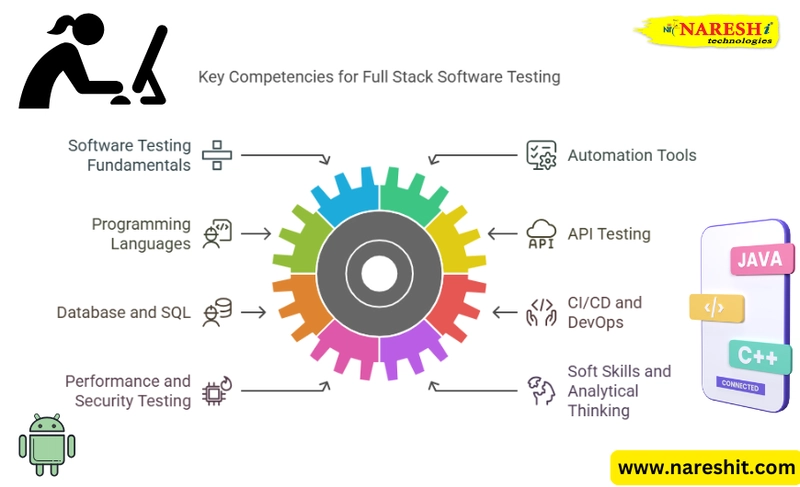Mastering Control Flow in Ruby: Beyond the Basics
February 11, 2025 Control flow is at the heart of every programming language, dictating how code executes based on conditions, loops, and exceptions. While most Ruby developers are familiar with if, case, while, and until, the language offers several advanced constructs that can make your code more expressive and efficient. Let’s dive into some lesser-known but powerful Ruby control flow techniques. 1. The Power of && and || as Control Flow Operators In Ruby, logical operators && and || are not just for boolean expressions; they can also be used for control flow: user ||= fetch_user_from_db This idiom ensures that user is assigned only if it is nil or false, avoiding unnecessary database calls. Similarly: authenticated_user && log_access This ensures that log_access is only called if authenticated_user is truthy, making it a compact alternative to if. 2. Using case With Complex Patterns Beyond simple case statements, Ruby allows pattern matching and regular expressions: case input when Integer then puts "It's a number!" when /^\d+$/ then puts "It's a numeric string!" when ->(x) { x.start_with?('A') } then puts "Starts with A!" else puts "Unknown type" end This flexibility allows for expressive, readable, and concise control flow logic. 3. Postfix Conditionals for One-Liners Ruby allows if and unless to be written as postfix modifiers: puts "Welcome!" if logged_in? A common trick is using unless to improve readability: raise "Missing user!" unless user This is cleaner than if !user, making the code easier to scan. 4. Iterators: for, while, and More Ruby provides several ways to iterate over collections and execute loops efficiently. for Loop for i in 1..5 puts i end This is useful for a simple range-based iteration, though Rubyists often prefer each. while and until counter = 0 while counter < 5 puts counter counter += 1 end until works similarly but runs until the condition becomes true: counter = 0 until counter == 5 puts counter counter += 1 end Iterators: each, times, map, and select Ruby has powerful iterators that replace traditional loops. [1, 2, 3, 4, 5].each { |num| puts num } Use times for a fixed number of iterations: 5.times { |i| puts "Iteration #{i}" } Transform collections with map: squares = [1, 2, 3].map { |n| n ** 2 } Filter elements with select: evens = [1, 2, 3, 4, 5].select { |n| n.even? } These iterators make Ruby code more readable and functional. 5. The Hidden Power of next, redo, and break Ruby’s loop controls go beyond break: next skips to the next iteration redo repeats the current iteration without re-evaluating the condition break exits the loop immediately 10.times do |i| next if i.even? redo if i == 5 # This can create an infinite loop! puts i end Use redo carefully to avoid unintended infinite loops! 6. Exception-Based Control Flow Sometimes, exceptions can be used for control flow rather than just error handling: def fetch_data attempt = 0 begin attempt += 1 perform_request rescue TimeoutError retry if attempt < 3 raise end end Here, retry ensures that transient errors don’t immediately cause failure, improving resilience. 7. The throw and catch Mechanism Unlike raise/rescue, throw and catch provide a structured way to exit deep loops or recursion: catch(:done) do 10.times do |i| throw :done if i == 5 puts i end end This allows for a clean early exit without excessive nesting. Need Expert Ruby on Rails Developers to Elevate Your Project? Fill out our form! >> Conclusion Mastering Ruby’s control flow features goes beyond if and while. By leveraging advanced constructs like pattern-matching case, postfix conditionals, loop control methods, iterators, exception-based flow, and throw/catch, you can write more expressive and efficient Ruby code. What are your favorite Ruby control flow tricks? Let’s discuss in the comments!

February 11, 2025
Control flow is at the heart of every programming language, dictating how code executes based on conditions, loops, and exceptions. While most Ruby developers are familiar with if, case, while, and until, the language offers several advanced constructs that can make your code more expressive and efficient. Let’s dive into some lesser-known but powerful Ruby control flow techniques.
1. The Power of && and || as Control Flow Operators
In Ruby, logical operators && and || are not just for boolean expressions; they can also be used for control flow:
user ||= fetch_user_from_db
This idiom ensures that user is assigned only if it is nil or false, avoiding unnecessary database calls.
Similarly:
authenticated_user && log_access
This ensures that log_access is only called if authenticated_user is truthy, making it a compact alternative to if.
2. Using case With Complex Patterns
Beyond simple case statements, Ruby allows pattern matching and regular expressions:
case input
when Integer then puts "It's a number!"
when /^\d+$/ then puts "It's a numeric string!"
when ->(x) { x.start_with?('A') } then puts "Starts with A!"
else puts "Unknown type"
end
This flexibility allows for expressive, readable, and concise control flow logic.
3. Postfix Conditionals for One-Liners
Ruby allows if and unless to be written as postfix modifiers:
puts "Welcome!" if logged_in?
A common trick is using unless to improve readability:
raise "Missing user!" unless user
This is cleaner than if !user, making the code easier to scan.
4. Iterators: for, while, and More
Ruby provides several ways to iterate over collections and execute loops efficiently.
for Loop
for i in 1..5
puts i
end
This is useful for a simple range-based iteration, though Rubyists often prefer each.
while and until
counter = 0
while counter < 5
puts counter
counter += 1
end
until works similarly but runs until the condition becomes true:
counter = 0
until counter == 5
puts counter
counter += 1
end
Iterators: each, times, map, and select
Ruby has powerful iterators that replace traditional loops.
[1, 2, 3, 4, 5].each { |num| puts num }
Use times for a fixed number of iterations:
5.times { |i| puts "Iteration #{i}" }
Transform collections with map:
squares = [1, 2, 3].map { |n| n ** 2 }
Filter elements with select:
evens = [1, 2, 3, 4, 5].select { |n| n.even? }
These iterators make Ruby code more readable and functional.
5. The Hidden Power of next, redo, and break
Ruby’s loop controls go beyond break:
- next skips to the next iteration
- redo repeats the current iteration without re-evaluating the condition
- break exits the loop immediately
10.times do |i|
next if i.even?
redo if i == 5 # This can create an infinite loop!
puts i
end
Use redo carefully to avoid unintended infinite loops!
6. Exception-Based Control Flow
Sometimes, exceptions can be used for control flow rather than just error handling:
def fetch_data
attempt = 0
begin
attempt += 1
perform_request
rescue TimeoutError
retry if attempt < 3
raise
end
end
Here, retry ensures that transient errors don’t immediately cause failure, improving resilience.
7. The throw and catch Mechanism
Unlike raise/rescue, throw and catch provide a structured way to exit deep loops or recursion:
catch(:done) do
10.times do |i|
throw :done if i == 5
puts i
end
end
This allows for a clean early exit without excessive nesting.
Need Expert Ruby on Rails Developers to Elevate Your Project?
Conclusion
Mastering Ruby’s control flow features goes beyond if and while. By leveraging advanced constructs like pattern-matching case, postfix conditionals, loop control methods, iterators, exception-based flow, and throw/catch, you can write more expressive and efficient Ruby code.
What are your favorite Ruby control flow tricks? Let’s discuss in the comments!  Read More
Read More











































































































































































![[The AI Show Episode 142]: ChatGPT’s New Image Generator, Studio Ghibli Craze and Backlash, Gemini 2.5, OpenAI Academy, 4o Updates, Vibe Marketing & xAI Acquires X](https://www.marketingaiinstitute.com/hubfs/ep%20142%20cover.png)




























































































































![[DEALS] The Premium Learn to Code Certification Bundle (97% off) & Other Deals Up To 98% Off – Offers End Soon!](https://www.javacodegeeks.com/wp-content/uploads/2012/12/jcg-logo.jpg)


![From drop-out to software architect with Jason Lengstorf [Podcast #167]](https://cdn.hashnode.com/res/hashnode/image/upload/v1743796461357/f3d19cd7-e6f5-4d7c-8bfc-eb974bc8da68.png?#)








































































































.png?#)

































_Christophe_Coat_Alamy.jpg?#)
 (1).webp?#)





































































































![Apple Considers Delaying Smart Home Hub Until 2026 [Gurman]](https://www.iclarified.com/images/news/96946/96946/96946-640.jpg)
![iPhone 17 Pro Won't Feature Two-Toned Back [Gurman]](https://www.iclarified.com/images/news/96944/96944/96944-640.jpg)
![Tariffs Threaten Apple's $999 iPhone Price Point in the U.S. [Gurman]](https://www.iclarified.com/images/news/96943/96943/96943-640.jpg)







































































































































